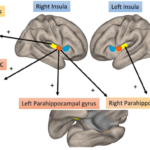Sex Differences in PsA
WASHINGTON, D.C.—You don’t have to be a doctor or a scientist to understand that men and women are different. But when you are, you can prove it. Evidence shows that biological differences, such as genetics, hormones and pain processing, as well as social-cultural differences (i.e., gender roles, support systems and health seeking behavior) contribute to sex differences. These sex differences impact the clinical presentation, diagnosis, response to therapy and patient experience of illness.
At ACR Convergence, two incredible clinician-scientists shared data that speak to the effect of sex difference in psoriatic arthritis (PsA).
Clinical Features & Disease Course

Dr. Coates
Laura Coates, MBChB, PhD, associate professor, University of Oxford, U.K., kicked off the session describing sex differences in the presentation and disease course of PsA.
When it comes to diagnosis, women go to the doctor with musculoskeletal complaints about two years before PsA is confirmed. On the other hand, men tend to wait, presenting when symptoms are more severe.
Dr. Coates said, “Women present frequently before diagnosis, and this [fact] is a massive opportunity to identify early disease. They often aren’t being recognized as PsA or developing PsA. Conversely, men aren’t presenting as much, and that’s also a problem. We need to educate our male patients about seeking help in psoriasis clinics and/or the [primary care provider’s] office.”
Regarding disease domains, women are more likely to have polyarthritis and enthesitis. In contrast, men are more likely to have mono- or oligoarthritis, axial disease, more severe psoriasis, higher C-reactive protein levels and dactylitis.2 A meta-analysis by Dr. Coates and colleagues showed that these patterns tend to persist through disease.3
“Global data is similar, with studies from China and Turkey showing the same pattern—more axial disease in men and more peripheral arthritis in women,” she said.
As for patient-reported outcomes, women generally report higher impact across almost all measures.3,4 Dr. Coates said, “Perhaps unsurprisingly, we see this [aspect] reflected in mental health impact as well. You can see higher rates of anxiety, depression and a combination of the two in cohorts of people with PsA, and if you look at the gender split, it’s higher for women compared with men.”4
Should We Manage Men & Women Differently?
“For many years now, we’ve had clear recommendations that we should be doing treat to target in our patients with PsA,” said Dr. Coates. “But there are differences in how men and women perceive remission, and over 50% of our patients have quite a different opinion about disease activity compared with their clinician’s assessment.”5,6



